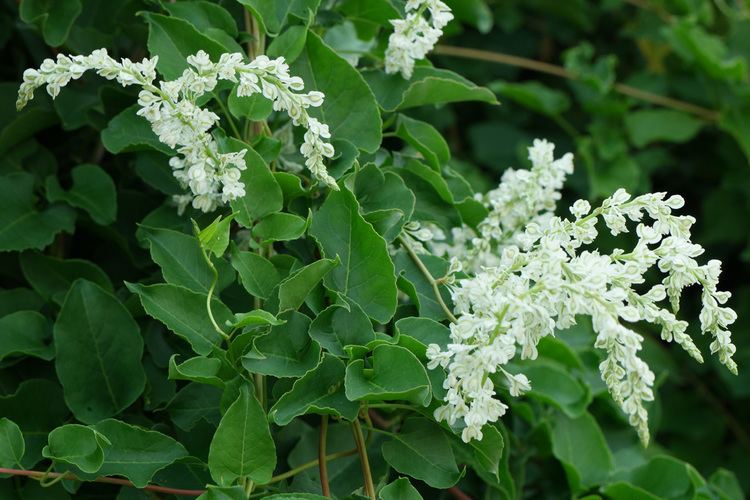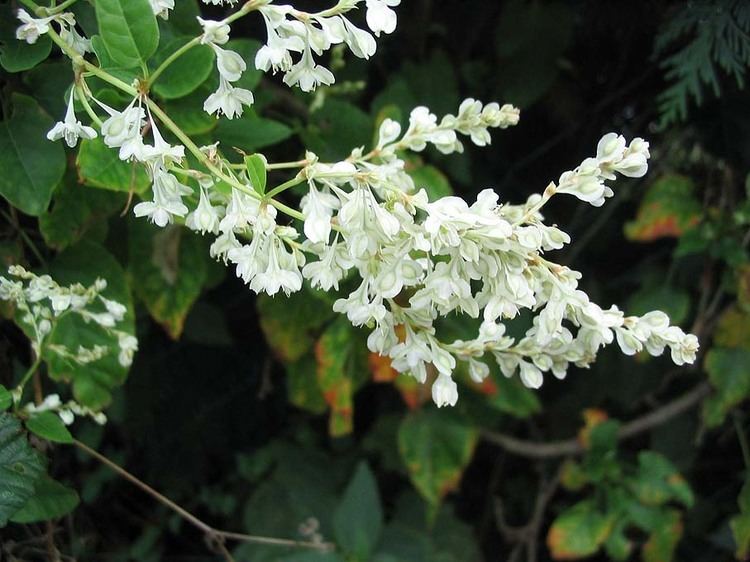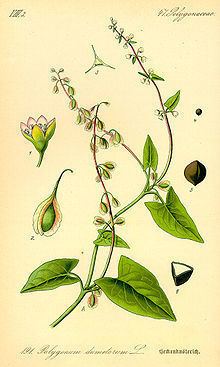Higher classification Polygonaceae | Scientific name Fallopia Rank Genus | |
 | ||
Lower classifications Japanese knotweed, Fallopia baldschuanica, Giant Knotweed, Black Bindweed, Tuber fleeceflower | ||
Bellingham soundcheck featuring fallopia
Fallopia is a genus of about 12–15 species of flowering plants in the buckwheat family, often included in a wider treatment of the related genus Polygonum in the past. The genus is native to temperate and subtropical regions of the Northern Hemisphere. The genus includes herbaceous perennial plants, herbaceous vines, and woody vines.
Contents
- Bellingham soundcheck featuring fallopia
- Fallopia japonica
- Hybrids
- Invasive species
- Medicinal properties
- References

Several species are serious invasive weeds, notably Japanese knotweed in Europe and North America.
The genus is named after Italian botanist Gabriello Fallopio, or Fallopius, who was the superintendent of the botanical garden at Padua. He was also an acclaimed anatomist, being considered a founder of modern anatomy along with Vesalius and Eustachius.

Fallopia species are used as food plants by the larvae of some Lepidoptera species including Coleophora therinella (recorded on F. convolvulus).



Fallopia japonica
Hybrids
Crosses between Japanese knotweed and giant knotweed have occurred where the two species grow in close proximity. The hybrid, Fallopia × bohemica (syn. Polygonum × bohemicum) is known as Bohemian knotweed.
Fallopia × conollyana (F. baldschuanica × F. japonica) is called railway-yard knotweed.
Invasive species
Many knotweed species, particularly Japanese knotweed, giant knotweed and Himalayan knotweed are considered noxious, invasive pests. Like many such weeds, Japanese knotweed was introduced from Japan first into the U.K., then into North America in the 19th century as an ornamental plant.
Some knotweeds grow extremely quickly during the spring; giant knotweed can reach 4.5 m by summer, Japanese knotweed 3 m, and "dwarf" Himalayan knotweed 1.5–2 m. In Japan, Japanese knotweed is known as itadori, or "strong plant". Some species can spread rapidly from an extensive network of rhizomes (roots that can sprout) spreading from 7–20 m from the parent plant and at least 2 m deep. Root and stem fragments as small as 1 cm can form new plant colonies. Floods and high water events wash whole or partial plants into rivers and creeks, dispersing pieces of knotweed throughout the flooded area and banks, which give rise to new plants. As with other invasive species of plants, freshly disturbed soil allows the rapidly growing young knotweed plants to outgrow other plants and take over the area, suppressing other species. Cutting, mowing, digging and some herbicide treatments, especially in early to mid growing season, fail to curb knotweed growth and in fact often stimulate the production of shoots from latent buds dispersed on the root crown or rhizomes.
Medicinal properties
Recently, Japanese knotweed (Fallopia japonica, syn. Polygonum japonicum, Polygonum cuspidatum, Reynoutria japonica) and others have been used to exploit their high concentrations of trans-resveratrol in the plants' stalks. Previously associated with and identified mainly in the skins of red grapes, resveratrol is currently under study in a number of research projects investigating its reputedly powerful antiaging properties.
